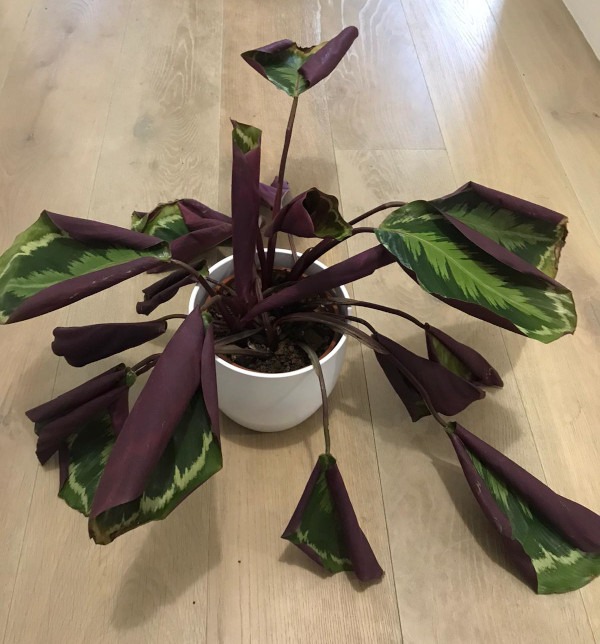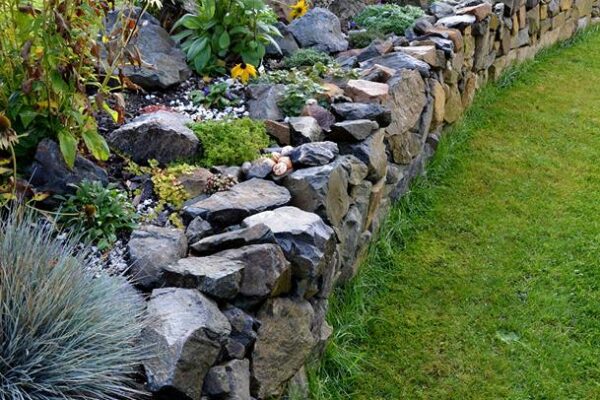How to Grow and Care for Calatheas: Easy Tips
We are constantly seeking beautiful indoor plants with captivating foliage, and among our top favorites are calatheas (Calathea veitchiana), commonly known as prayer plants. These plants require minimal maintenance and can thrive indoors. They prefer bright, indirect light but can also adapt to low-light conditions.
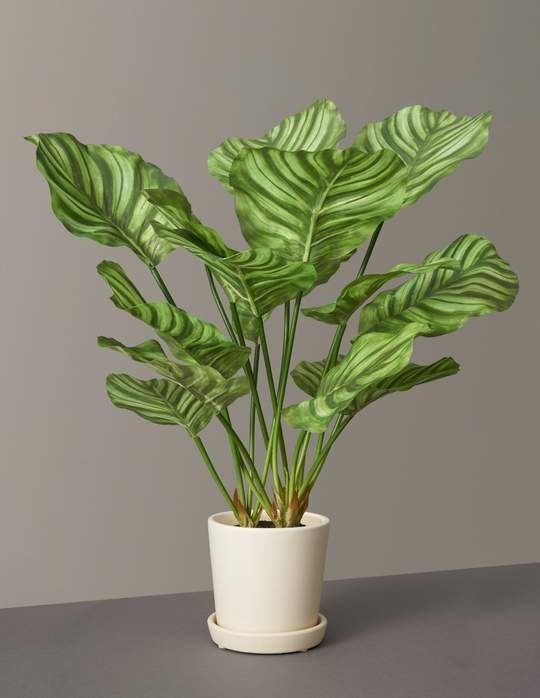
Calatheas earned their nickname ‘prayer plants’ due to the fascinating movements of their leaves. Throughout the day and night, calathea leaves display a noticeable circadian rhythm of lifting and dipping. During daylight hours, their leaves stretch horizontally from the stems. However, if you check on them at night, you’ll observe the leaves standing upright. Each variety of calathea exhibits unique characteristics
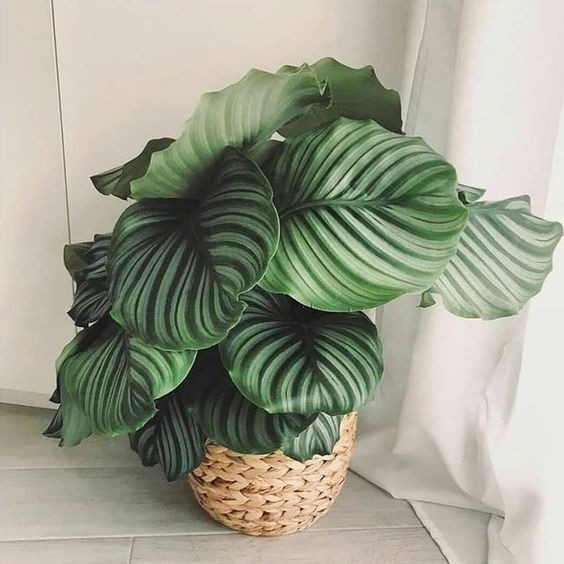
Care Tips for Calatheas
Calatheas thrive in medium to bright indirect light, although they can also adapt and tolerate low-light conditions if necessary. Watering should be done sparingly, ideally every one to two weeks at most, to prevent waterlogging. Allowing the soil to dry out between waterings is crucial for their well-being. Additionally, these plants adore humidity, reminiscent of their natural tropical habitats.Calatheas thrive in medium to bright indirect light, although they can also adapt and tolerate low-light conditions if necessary. Watering should be done sparingly, ideally every one to two weeks at most, to prevent waterlogging. Allowing the soil to dry out between waterings is crucial for their well-being. Additionally, these plants adore humidity, reminiscent of their natural tropical habitats.

Light Requirements
For indoor cultivation, utilize a garden lamp to offer indirect sunlight to your calatheas. When grown outdoors, these plants flourish in filtered sunlight, such as the shade provided by a tree canopy. It is essential to avoid exposing calatheas to direct sunlight as it may cause leaf burn and result in less vibrant foliage. To optimize their growth, you may consider relocating indoor calatheas based on the time of day to ensure they receive the appropriate amount of light.
Soil Requirement
Calatheas flourish in soil that is abundant in organic matter. They prefer loamy soil with a pH that is slightly acidic to neutral, as this helps prevent root burn. If you’re growing calatheas in containers, incorporating gravel or peat moss can aid in maintaining well-draining soil, promoting their optimal growth conditions.
Watering Guidelines
To properly water calatheas, aim for intervals of every one to two weeks, but ensure that the top few inches of soil are partially dry before watering. It is crucial to have well-draining soil to prevent root rot. Striking a balance in watering is essential, as it helps prevent leaves from browning and also avoids the issue of waterlogged soil. Keeping these factors in mind will help maintain the health and vitality of your calatheas.
Temperature and Humidity Requirements
Calatheas thrive when exposed to temperatures akin to their native climates. It is best to maintain an environment with temperatures ranging from 70°F to 85°F (avoiding temperatures of 60°F or lower). These plants have a fondness for humidity and flourish in spaces with moist conditions. You can treat your calatheas to a spa day occasionally by placing them in the bathroom while you shower, allowing them to bask in an approximation of tropical conditions. Alternatively, situating the plants near a humidifier can also provide them with the desired level of humidity for optimal growth.
Fertilization Recommendations
During the spring and summer, it is beneficial to provide calatheas with a balanced 10-10-10 liquid fertilizer. However, it’s important to avoid over-fertilization in the fall and winter months. Instead, opt for a half-strength fertilizer application every three months during this period. This approach ensures that your calatheas receive the necessary nutrients without overwhelming them during their dormant phase.
Varieties of Calatheas
Calatheas offer a diverse array of stunning leaves, each with its unique charm and care requirements to suit your space. Here are some captivating selections to consider:
1. 'Pinkstripe Plant' (Calathea ornata):
This popular and low-maintenance choice boasts glossy, deep green leaves adorned with pink or white pinstripes, earning it the nickname ‘pinstripe plant.’
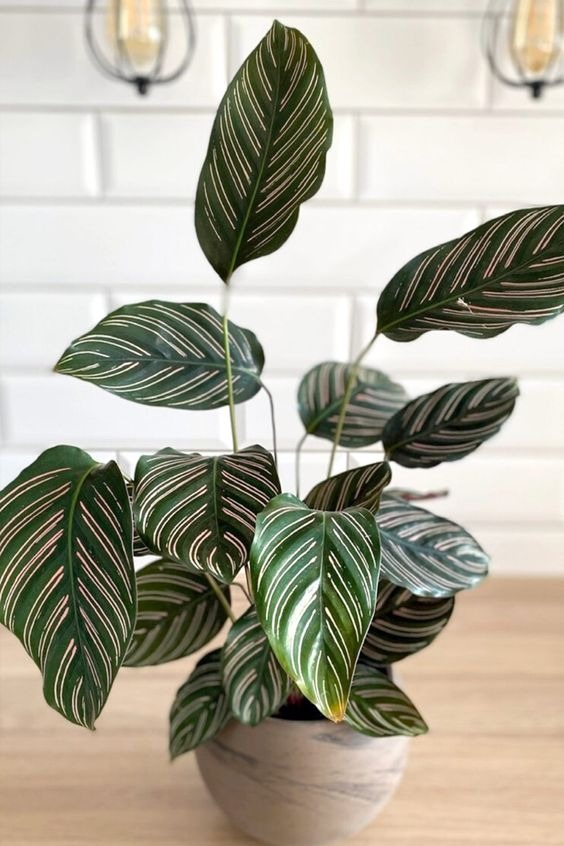
2. 'Prayer Plant' (Calathea orbifolia):
Featuring luminous, bright green leaves adorned with lighter green stripes, the ‘Prayer Plant’ is an exquisite addition to any space.
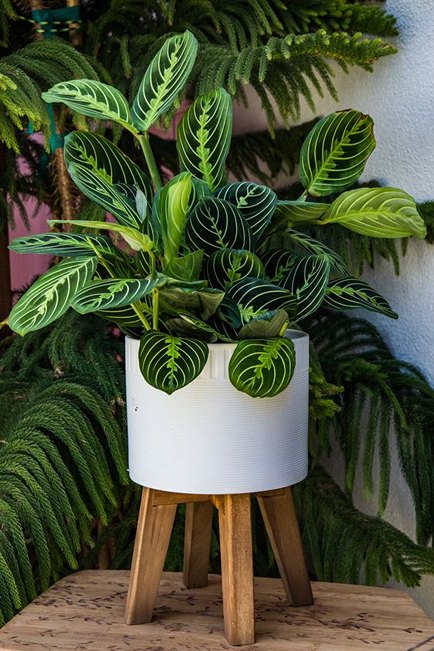
3. 'Rattlesnake Plant' (Calathea lancifolia):
Also known by its intriguing name, the ‘Rattlesnake Plant’ boasts striking patterns on its leaves, making it a visually captivating variety.
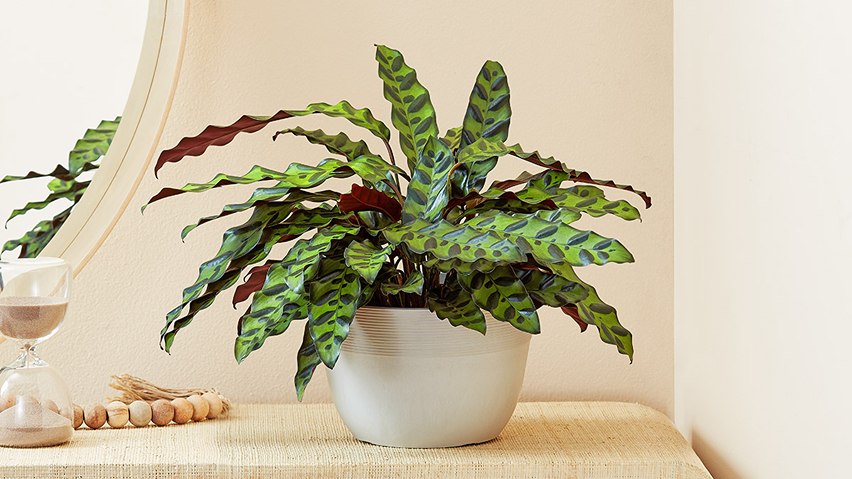
Pruning Tips
Calatheas are low-maintenance plants and generally don’t demand extensive pruning. To keep them in good shape, simply trim dead or damaged leaves using scissors or pruning shears. Trim these leaves at the point where they intersect with the plant’s stem or base. While it’s not necessary to remove spent foliage as wilted or brown leaves will naturally fall off, doing so can help maintain a tidy and healthy appearance for your calatheas.
Propagation
To propagate calatheas, choose plants that are at least two years old and perform the propagation during the active growth period in spring or summer. Follow these steps for successful root division:
- Water the calathea adequately in the spring or summer to ensure the roots have sufficient moisture.
- Carefully and gently dig up the roots, taking care not to damage them.
- Use your fingers to separate the roots and remove excess soil. Mature root clumps should separate easily, but a garden fork or sharp knife can assist in separating them if needed.
- Repot the separated roots into individual containers filled with compost. Ensure the containers are larger than the root ball, leaving a few inches of space around the perimeter.
- Keep the newly planted roots well-watered during the establishment phase.
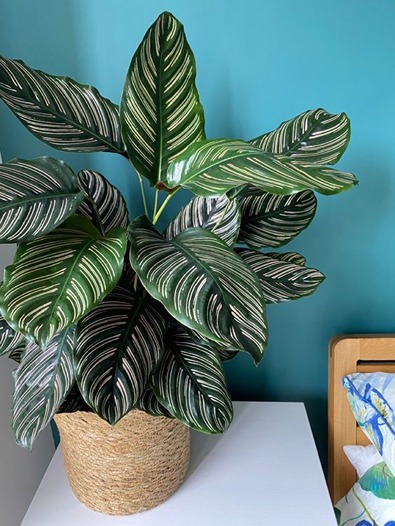
Growing from Seed
Growing calatheas from seeds can be more challenging compared to root division. Follow these steps to begin the process in spring:
- Prepare a seed-starting tray and fill it with potting mix, ensuring the tray has proper drainage.
- Before planting the seeds, water the soil lightly and then gently press the seeds into the mixture. Allow excess water to drain before adding the seeds.
- Encourage humidity by covering the tray with a plastic bag. Place it in a warm location with bright, indirect sunlight, such as near a window or using a garden lamp.
- Care for the seeds for about two to four weeks, ensuring the soil remains moist and well-draining to aid in germination.
- Once the roots have established, transplant the new growth into larger containers for continued growth and development.
Potting and Repotting
Just like propagation, the ideal time to repot calatheas is during the spring when they experience vigorous growth. When repotting, opt for containers that are larger than the root ball and ensure they have ample drainage holes. Containers with a depth of at least eight to 10 inches offer sufficient room for the roots to spread and grow. Typically, calatheas only require repotting every one to two years. Before transplanting the plants, remember to water them deeply to prepare them for the transition.
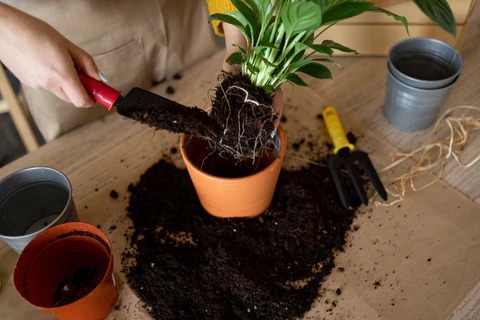
Overwintering
To ensure the well-being of your calatheas during the colder months, it’s vital to maintain temperatures above 60°F, mimicking their native environments. Prior to the arrival of the first frost, bring the plants indoors to shield them from cold damage. Before the indoor transfer, inspect for any garden pests and address them with insecticidal soap if necessary. Throughout the winter, continue with weekly waterings, as calatheas are not drought-tolerant. To enhance their growing conditions, consider using a humidifier or placing the plant in a terrarium or the bathroom while showering to increase humidity. It is advisable to wait until spring to resume fertilization for optimal results.
Common Pests & Plant Diseases
Calatheas can fall victim to various pests, such as spider mites, whiteflies, scales, mealybugs, thrips, and fungus gnats. To reduce the risk of infestations, it is beneficial to let the soil thoroughly dry before watering, as this discourages pests from attacking. If pest issues arise, treating calatheas with neem oil spray and regularly wiping down leaves can help control the situation.
As for diseases, calatheas can be affected by root rot and bacterial leaf spots. To prevent these problems, ensure you use clean water and well-draining soil when caring for your plants. These simple practices can go a long way in safeguarding your calatheas from diseases.

How Encourage Calatheas to Bloom?
Calatheas grown as houseplants rarely bloom. However, to promote blooming in outdoor plants, it’s important to water them with clean, distilled water in appropriate amounts—avoid both overwatering and underwatering. Additionally, try to prevent significant drops in temperatures and ensure the plants have sufficient humidity to create favorable conditions for blooming.
Common Issues
When you meet the proper care conditions for calatheas, these plants are easy to maintain. However, neglecting their care or providing imbalanced water, soil, and light can lead to problems. Here’s what you need to know about growing calatheas:
Curling Leaves
If calathea leaves are wilting or curling, it’s a sign of underwatering, and the potting mix may be dry. Low humidity levels can also cause the plant to dry out and lead to irreversible damage. To prevent this issue, keep calatheas away from direct sunlight.
Leaves Turning Yellow
Yellowing calathea leaves can result from several factors, such as overwatering or infestations of spider mites, whiteflies, or thrips. Root rot, a disease caused by overwatering, becomes apparent in older leaves. Eventually, the plants may wilt and shed leaves if the soil remains consistently wet. To avoid yellowing foliage, use clean, distilled water for calatheas to prevent exposure to specific minerals that can contribute to this problem.
